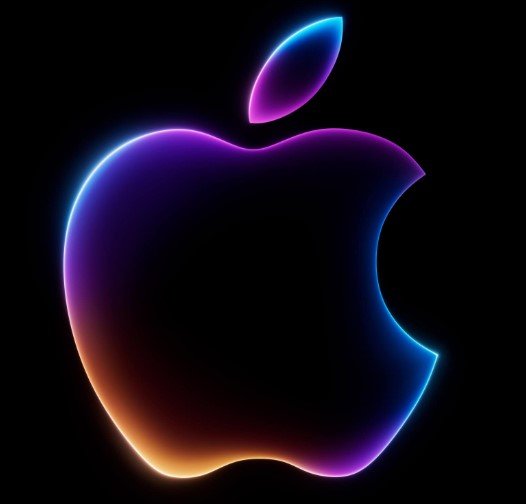Apple kept its cards close to the chest on artificial intelligence at this year’s WWDC, leaving investors wanting more. But the tech giant didn’t walk off stage empty-handed. A sweeping new design change—its biggest in over a decade—just might be the real headline.
The WWDC keynote in Cupertino on June 9 didn’t deliver a knockout punch. No Vision Pro sequel. No “wow” Siri 2.0. Instead, Apple took a quieter route. One lined with Liquid Glass and subtle animations, promising to reshape how its ecosystem looks and feels across all devices.
The AI Anticlimax That Wall Street Can’t Ignore
Let’s not sugarcoat it—expectations were higher.
Apple had teased an intelligence push for over a year. Last June, “Apple Intelligence” was paraded as the company’s answer to ChatGPT. It promised users a Siri that didn’t just answer questions, but made life easier—scheduling appointments, managing messages, interpreting emails with nuance.
But what showed up Monday was more of a whisper than a statement. Siri’s upgrade? Delayed. Apple Intelligence? No launch date. No demo. Not even a fresh mention in Tim Cook’s keynote.
UBS analyst David Vogt put it plainly: “Incremental.” His Monday note emphasized how most of the AI features Apple announced were already on the market via rivals. Think Gmail’s smart replies. Or ChatGPT’s growing presence in everything from writing tools to coding helpers.
That hit the markets. Apple’s stock fell 1.2% on the day. For a trillion-dollar company, that’s not nothing.

Liquid Glass: Apple’s Silent Star
While the AI news underwhelmed, Apple’s true play might be hiding in plain sight. The new design language—called Liquid Glass—marks the biggest visual revamp since iOS 7 back in 2013. And it’s not just a cosmetic change.
Across iPhones, Macs, iPads, and even Vision Pro, users will soon see a unified aesthetic. Think translucent lock screens that shimmer like real glass. Buttons that look like floating gel capsules. Everything slides, bounces, or flows in a way that feels more…alive.
The redesign isn’t just about looks. It’s about how users interact with devices:
-
Answering calls now comes with a dynamic animation.
-
Messages display in cleaner, lighter windows.
-
Notifications sit subtly in the background, less intrusive but still visible.
That matters. A lot. Because design—not AI—has always been Apple’s emotional glue. It’s what keeps loyalists coming back.
What Went Wrong With Apple Intelligence?
The timeline was already shaky. Back in March, Apple pulled promotional material hinting at a launch for its AI assistant upgrade. No one said why. Now, we know: it just wasn’t ready.
Craig Federighi, Apple’s SVP of software engineering, addressed the elephant in the room on Monday. He admitted the AI work “needed more time” to hit Apple’s quality standards. A vague “coming year” promise is all the audience got.
Meanwhile, rivals are sprinting ahead:
-
Google is baking Gemini into Android and Search.
-
Microsoft has stuffed OpenAI’s models into Office and Windows.
-
Meta is testing AI features across Instagram and WhatsApp.
Apple? Still polishing.
One Apple engineer, speaking anonymously to a tech blog, said the company’s internal AI teams have been struggling to agree on what Siri’s next version should actually do—practically and ethically.
The Investor Mood Is Mixed, Maybe Even Frustrated
Wall Street has a love-hate relationship with Apple’s cautiousness. Yes, Apple often enters late and still wins. (Remember smartphones before the iPhone?) But AI is moving fast—and the Street’s patience isn’t infinite.
Here’s a quick look at how Apple’s stock reacted after recent WWDCs:
| Year | Main Announcement | Stock Change (Next Day) |
|---|---|---|
| 2023 | Vision Pro | +0.8% |
| 2024 | Apple Intelligence Tease | -0.5% |
| 2025 | Liquid Glass & AI Delay | -1.2% |
The message is clear: aesthetic wins can’t always plug the AI gap.
A Rebrand in Strategy, or Just a Rewind?
Some say Apple’s WWDC 2025 wasn’t a flop, just a reset. Instead of chasing AI headlines, it doubled down on what it knows best—design, integration, and software control.
You can see it in small touches. Take the way multitasking looks now on iPadOS. Or how macOS Sonoma’s new widgets interact with your desktop wallpaper. These aren’t flashy. But they feel thoughtful.
One iOS developer in attendance told Bloomberg, “This is the first time in years where the redesign feels personal again. Like they’re paying attention to how things feel, not just what they do.”
Not everyone agrees. Tech Twitter was buzzing—mostly with AI jokes. A viral meme compared Apple’s keynote to a “high-end salad bar: beautiful presentation, but you’re still hungry.”
Will It Be Enough?
That’s the question lingering as WWDC 2025 rolls on through the week. Developers will get hands-on time with the new features. Test versions of iOS 19, macOS Sonoma, and visionOS will soon trickle into beta channels.
Still, it’s not lost on anyone: Apple didn’t deliver a moonshot this year. No “one more thing.” No show-stopper.
But maybe, just maybe, this is Apple’s way of slowing the tempo. Letting others chase AI razzle-dazzle, while it polishes what really matters—experience.
Or maybe it really did just fumble the moment.








